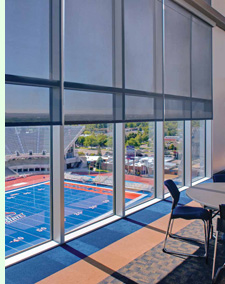 SheerWeave solar shade fabrics provide the perfect balance of light, comfort and beauty, making them the ideal window covering solution for residential and commercial spaces alike. A sleek and functional alternative to ordinary window coverings, SheerWeave effortlessly and elegantly manages the sun's harsh heat and blinding glare. From modern, neutral hues to subtly-textured, organic weaves in warm earth tones, these fabrics are the perfect complement to any interior design scheme. SheerWeave fabrics are also available in a variety of openness factors ranging from one to 14 percent and wide widths to cover large window openings. SheerWeave solar shade fabrics provide the perfect balance of light, comfort and beauty, making them the ideal window covering solution for residential and commercial spaces alike. A sleek and functional alternative to ordinary window coverings, SheerWeave effortlessly and elegantly manages the sun's harsh heat and blinding glare. From modern, neutral hues to subtly-textured, organic weaves in warm earth tones, these fabrics are the perfect complement to any interior design scheme. SheerWeave fabrics are also available in a variety of openness factors ranging from one to 14 percent and wide widths to cover large window openings.
Energy Savings
Solar heat gain can account for up to 50% of a building's energy costs according to the U.S. Department of Energy. By reflecting solar energy, SheerWeave fabrics reduce solar heat gain, lower energy costs and improve comfort. These solar shade fabrics allow for the use of natural day lighting, reducing the need for artificial lighting and providing additional energy savings.
Acoustical Noise Reduction
Driven by LEED environmental objectives, the trend of commercial design is to use more glass with exposed floors and ceilings. With these hard surfaces comes an acoustical challenge that architects and designers must address. Acoustical performance values are expressed by the NRC (Noise Reduction Coefficient) or the SAA (Sound Absorption Average). We have tested a broad range of SheerWeave solar shade fabrics for both values based on a free hanging vertical panel to best emulate a roller shade. Style 2500 has overall NRC values of .50-.60 with even more impressive values within frequency ranges of human speech.
Greenguard
 Greenguard Certification ensures products have met some of the world's most rigorous and comprehensive standards for low emissions of volatile organic compounds (VOCs) into indoor air. Phifer was the first manufacturer in the window treatment industry to achieve Greenguard certification for solar shade fabrics. Certification is completely voluntary and ensures that the highest industry standards are being applied to maintain indoor air quality for the health and safety of building occupants. Greenguard Certification ensures products have met some of the world's most rigorous and comprehensive standards for low emissions of volatile organic compounds (VOCs) into indoor air. Phifer was the first manufacturer in the window treatment industry to achieve Greenguard certification for solar shade fabrics. Certification is completely voluntary and ensures that the highest industry standards are being applied to maintain indoor air quality for the health and safety of building occupants.
Microban
 SheerWeave fabrics are the only solar shade fabrics in the world to include Microban protection. Microban antimicrobial protection works continuously to inhibit the growth of bacteria, mold and mildew that can cause stains, odors and product deterioration. SheerWeave fabrics are the only solar shade fabrics in the world to include Microban protection. Microban antimicrobial protection works continuously to inhibit the growth of bacteria, mold and mildew that can cause stains, odors and product deterioration.
- Microban antimicrobial protection is infused into Phifer SheerWeave solar shade fabrics for lasting protection that won't wash off or wear away for the lifetime of the shade.
- SheerWeave fabrics infused with Microban antimicrobial technology are ideal for any commercial or residential environment where microbes are a concern, including healthcare, hospitality, home, office, schools and institutions.
- Most SheerWeave fabrics include Microban antimicrobial product protection. Microban is the leading technology in antibacterial/antifungal protection.
Dow Ecolibrium
 Dow Ecolibrium Bio-Based Plasticizers offer a renewable alternative to traditional petroleum-based plasticizers for a more sustainable option. This unique green technology is exclusive to Phifer for the window treatment industry and can only be found in SheerWeave Style 4000/4100 fabrics. Dow Ecolibrium Bio-Based Plasticizers offer a renewable alternative to traditional petroleum-based plasticizers for a more sustainable option. This unique green technology is exclusive to Phifer for the window treatment industry and can only be found in SheerWeave Style 4000/4100 fabrics.
 UV Protection UV Protection
Most SheerWeave solar shade fabrics have received the Seal of Approval by the Melanoma International Foundation (MIF) for effectiveness in preventing sun damage to the skin or eyes.
Lead Free
Phifer's entire line of SheerWeave fabrics is lead free, meeting and far exceeding several window covering industry testing standards for hazardous materials. According to the Environmental Protection Agency, certain levels of exposure to lead, which can be found in everything from painted toys and furniture to soil around a home, can result in a variety of health effects. Even low levels of exposure can be harmful to children. The lead-free stamp marks another confirmation of Phifer's commitment to remain environmentally responsible.
PVC-Free
When a more environmentally-sensitive and sustainable fabric option is preferred, Phifer offers several PVC-free solar shade fabrics in multiple openness factors and blackout collections.
Durability/Cleanability
Functional and durable, SheerWeave interior sun control fabrics offer light management while withstanding spills, splatters and the hustle and bustle of high traffic areas. These fabrics are easy to maintain and the following cleaning practices will not affect the products' ability to resist the growth of microorganisms.
- Clean with mild soap and water.
- If cleaners other than mild soap and water are desired, test in an inconspicuous area prior to use.
- Rinse thoroughly after cleaning.
- Paint solvents will damage the vinyl surface of SheerWeave products and should not be used.
Ts: Solar Transmittance
Measures the proportion of solar energy transmitted through the fabric.
A low figure indicates a good filtration of solar energy by the fabric. |
|
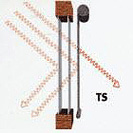
|
Rs: Solar Reflectance
Solar Reflectance
measures the proportion of solar energy reflected by the fabric. A high figure indicates a good reflection of solar energy by the fabric. |
|
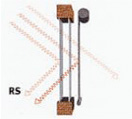 |
As: Solar Absorbancies
Measures the proportion of solar energy absorbed by the fabric.
A low figure indicates a low absorption of solar energy by the fabric. |
|
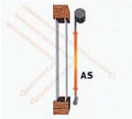 |
Tuv: The UV Transmittance
Is closely related to the openness factor and measures the amount of UV that is transmitted through the fabric. |
|
|
Tv: Visible Light Transmittance
Measures the percentage of visable light coming through the fabric that can bee seen by the naked eye. It is related to the amount of light (brightness) a person receives through a glazing system. A low figure shows a very efficient fabric. |
|
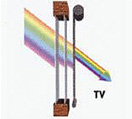 |
O-F: The Openness Factor
Measures the proportion of holes in a woven fabric. This parameter, together with other technical properties of the fabric, should be considered when determining the degree of visibility and heat and glare control, that the fabric offers. The openness factor can vary slightly from color to color in the same fabric, and is often expressed as as Average OF. A low OF shows that the fabric is a very low weave. |
|
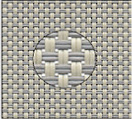 |
Sc: The Shading Coefficient
Is the ratio between the solar factors of the protected window
(glazing + sun blind) and the solar factor. |
|
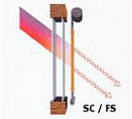 |
|